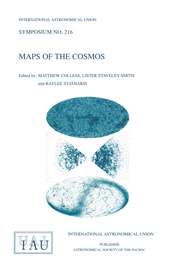No CrossRef data available.
Article contents
The ultraviolet background (intergalactic gas, the Galaxy, and subcosmic rays)
Published online by Cambridge University Press: 14 August 2015
Abstract
(1) Observations. – A survey is made of observations of the background radiation at UV wavelengths from above the atmosphere. Sources of the background radiation and ways of determining the extragalactic component of the background are discussed. Future observations are also discussed.
(2) Cosmology. – Limits to the properties of the intergalactic gas follow from observations of the UV background. The problem of detecting galaxies at early stages in their evolution is considered.
(3) The Galaxy. – Observations and theoretical estimates are given for the integrated brightness of the Galaxy at UV wavelengths beyond the Lyman-α line. Also discussed are the nature of the Lyman-α emission from the Milky Way and the principal ways of constructing the luminosity function of stars in the Galaxy from observations of the integrated UV spectrum.
(4) Subcosmic Rays in the Interstellar Medium. – Fast neutral excited hydrogen atoms can be formed from charge-exchange interactions between subcosmic-ray protons and neutral interstellar gas. Upper limits are given to the energy density of subcosmic rays having E ~ 100 keV.
(5) Limits on the Background Radiation in the range <912 Å. – The distribution of neutral hydrogen in the peripheries of galaxies allows limits to be obtained for the flux of metagalactic ionising radiation. The heating and ionisation of the interstellar medium by X-rays is considered.
- Type
- Part III: Interstellar Absorption and Emission
- Information
- Copyright
- Copyright © Reidel 1970


